A few months back we asked: ‘how easy is it to drive a Toyota self-charging hybrid in a way that maximises the efficiency of its powertrain?’. The answer to that slightly wordy query is thankfully somewhat shorter: it’s pretty easy. Now we’re posing the same question of the Toyota Prius Plug-in Hybrid.
This time, however, thanks to the Prius Plug-in’s slightly more complex but even cleaner and more efficient powertrain, the answer isn’t quite so straightforward. So to find out, we spent a week driving a Prius Plug-in Hybrid on a wide variety of different routes and on all types of roads: urban, A-roads, B-roads and motorways, up and over hills and across the British countryside.
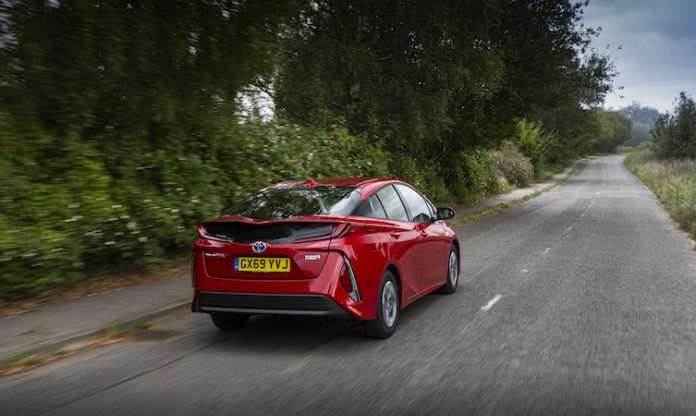
First, let’s look at how the Prius Plug-in’s hybrid powertrain works, and how it differs from those of Toyota’s self-charging hybrids.
Prius Hybrid vs Prius Plug-in Hybrid: what’s the difference?
The regular Prius, the Corolla Hybrid, the Toyota C-HR and the RAV4 Hybrid all pair a four-cylinder petrol engine with a compact electric motor to provide a mix of limited electric-only running or a combination of petrol-electric or petrol-only power. The electric motor’s battery is charged on the go, by the petrol engine and via regenerative braking.
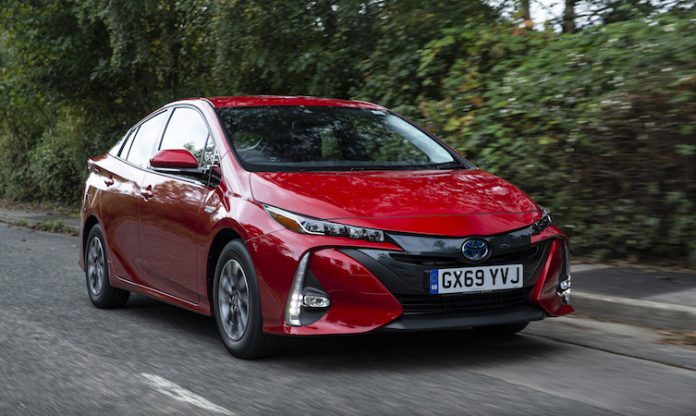
The Prius Plug-in Hybrid uses essentially the same 1.8 VVT-i petrol engine as the self-charging Prius but has a dual, rather than single, electric motor set-up, albeit with the same power and torque outputs of 122hp and 142Nm respectively.
But the Prius Plug-in has a much larger-capacity lithium-ion battery: 8.8kWh to the self-charging Prius’s 1.31kW/h. If those numbers don’t mean much, don’t worry, it’s pretty simple: the higher the figure, the further you can travel on electric power.
That bigger battery is key to the Prius Plug-in’s exceptional efficiency and environmentally friendly performance. It gives an electric-only range of up to 34 miles and a maximum EV speed of 84mph (but not both at the same time, because the faster you go, the quicker you’ll drain the battery. Oh, and please respect the UK speed limits at all times), along with official figures of 217mpg combined and CO2 emissions of just 29g/km.
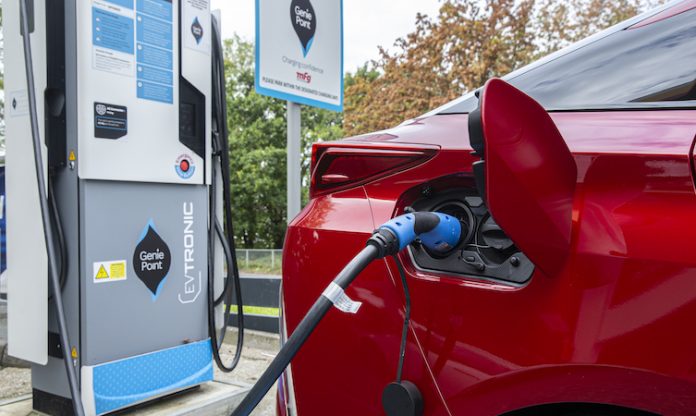
The battery is, however, too big to be fully recharged by the petrol engine and regenerative braking, hence the ‘Plug-in’ part. To fully charge the battery you’ll need to plug the car into either a domestic electricity supply (just over three hours for a full charge) or an EV charging point (about two hours).
Read more The Prius Plug-in attempts motor sport
The Prius Plug-in has switchable HV, EV and EC City drive settings, for hybrid, electric only or reduced-power urban driving, along with selectable Eco, Normal and Power drive modes. Like the self-charging Prius, there’s also a ‘B’ setting for the powertrain that enhances the regenerative braking effect.
Prius Plug-in Hybrid: efficient driving tips
Now, that might seem like a lot to take in, and, let’s be honest, at first it is. But with a bit of forethought and understanding, and a considered approach to your use of the controls, the rewards are really quite exceptional day-to-day efficiency.
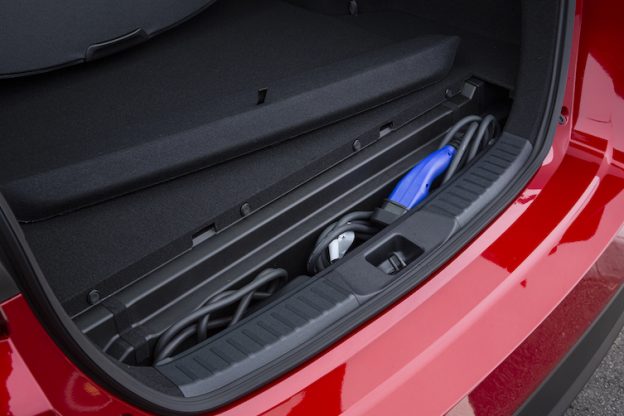
Maximising the Prius Plug-in’s efficiency means thinking a bit more in advance about your journeys and the type of driving you’re doing. The car’s official electric-only range is 34 miles, but we saw 35.3 miles on a longer run, as well as much closer to 20 miles with lots of urban driving.
Think in advance about the type of driving you’re doing
So if you can, plan your driving around how much of each trip can be carried out in EV mode, but also think about whether or not you can recharge at the end. If you can, and/or if the majority of your journeys can be completed in EV mode, then your environmental footprint is minimised.
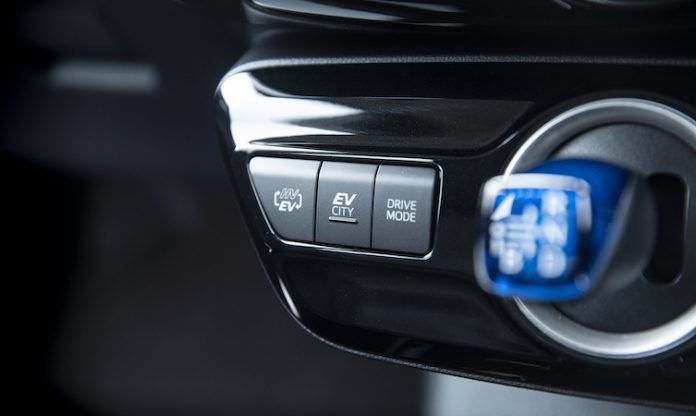
The techniques required to drive the Prius Plug-in Hybrid as efficiently as possible are much the same as those you would apply to driving any car. We actually covered those in the earlier article looking at the self-charging Toyota Corolla Hybrid, and respectfully suggest you divert your attention here for a few minutes (there’s some some solid-gold eco-driving advice in there, it really is a cracking read).
Once you’ve taken that on board, the key to maximising the Prius Plug-in is understanding its drive modes, some forward journey planning, managing the EV range and being mindful of when you can next recharge. Yes, that’s a lot to take in, but all of this can be learned over time with the car.
The car will manage the power sources by itself if you prefer
What we’re talking about here is fine-tuning to absolutely make the most of what the Prius Plug-in Hybrid can achieve. (The car can, of course, be left to its own devices and will happily manage its power sources by itself. Just remember to recharge it as often as you can.)
If you’re going on a longer trip then obviously try to start with a full charge, but also be mindful of making sure you use all of that charge by journey’s end (if it’s a round trip with no opportunity to recharge at your stop, then factor in your return journey, too).
Prius Plug-in Hybrid: using the driving modes
To maximise the Prius Plug-in’s fuel efficiency, that might mean toggling between HV and EV modes as you go: use EV mode in town and slow-moving traffic when the petrol engine is at its most inefficient, then switch to HV once up to speed on faster roads, when the load on the engine is less and fuel economy improves. All the while, keep an eye on the battery range – helpfully in your line of sight thanks to the Prius Plug-in’s excellent head-up display.
The effortless acceleration in EV mode is appealing
Perhaps one of the most appealing aspects of the Prius Plug-in’s performance is its effortless acceleration off the line in EV mode. It’s really quite entertaining but also an achilles heel if maximising battery range is your goal. So as tempting as it is to enjoy that initial kick of electric power, doing so will drain your range. Better to pull away more smoothly and conserve energy.
It’s also worth pointing out that the electric motor’s battery is never fully depleted. Once its charge dips below a certain point, the car switches from EV mode to HV. But there will always be enough charge left for the car to drive like a self-charging Toyota hybrid, with all the efficiency advantages that brings. Under the right conditions it is possible to replenish the battery’s charge enough to restore EV mode, but this isn’t necessarily the most efficient way to use the car.
Prius Plug-in Hybrid: how efficient is it?
So what does all that amount to in terms of economy and range? Well, we saw some very impressive figures on the Prius Plug-in’s various displays (they’re complicated at first but you get used to them). Our best all-electric range was that 35.3-mile figure, and we saw an estimated 37.9-mile range at the start of one journey. But doing the fuel economy maths can get a bit tricky.
One 71.6-mile trip on urban roads, motorways and across country returned a claimed 135mpg, but that’s calculated with 31 miles of electric-only driving included. A few minutes with a calculator actually adjusts that 135mpg to a still eyebrow-raising 76.6mpg.
Our car produced zero emissions for more than half its journey
Another 108-mile round trip (with a full recharge at our midway stop) showed 193mpg on the trip, but 66 of those miles were in EV mode. That adjusts to a still commendable – and consistent – 75.2mpg and means our Prius Plug-in was producing zero emissions for more than half of the journey.
Prius Plug-in Hybrid: will it suit my lifestyle?
The Prius Plug-in Hybrid won’t necessarily be the best option for everyone. To make the most of the car’s electric-only range and maximise overall efficiency (as well as minimising running costs), you should recharge at the end of most, if not all, journeys. So if plugging in where you live isn’t convenient, or an option at all, then a Prius Plug-in might not be the right choice.
However, if charging is easy for you, and if you want something that is roomy, comfortable, smooth to drive and well-equipped, and which is also exceptionally efficient, then a Prius Plug-in Hybrid – or even the forthcoming RAV4 Plug-in Hybrid – could be just the car for you.
By Tim Dickson, motoring journalist and eco-driving specialist





Like the last comment I have had Gen2 & Gen3 Prius and Auris Ts Hybrid now driving a Gen4 Prius which I love. I am considering going PHEV but would like something different. Are Toyota planning other PHEV’s? The RAV is too big like the Corolla TS but want PHEV. I am low milage user and am happy with my Gen4 but fancy a change.
Hi Victor,
Thanks for your comment. We are glad to hear that your Prius Plug-in is serving you well.
We would recommend keeping an eye on our blog and social media channels for all the latest information on our vehicle offerings.
Thanks.
Gen 3 normal Prius got two
Electric motors mg1 and mg2.
The writer wrote that Prius plug in,
Got two motors versus one
On normal Prius.?????
How come,?
We’re so sorry Sam, we don’t quite understand your question?
Thank you.
Can you use the battery for EV driving as required. e.g. if you were in town on just EV and then came across a dual carriageway you may want to keep you battery for later in another town or traffic jam.
Hi Anthony,
The Prius Plug-in has switchable HV, EV and EC City drive settings, for hybrid, electric only or reduced-power urban driving, along with selectable Eco, Normal and Power drive modes.
Thanks.
“ The car will manage the power sources by itself if you prefer”
Which driving mode should be used that gives auto switching between EV and HV modes?
Hi John,
The car will manage power sources itself when the vehicle is in EV mode (driving using only the electric motor). Depending on the situation, EV driving may be canceled and both gasoline engine and electric motor are used.
Thanks
Hi
I am thinking of buying the rav 4 2.5 phev CVT. Petrol.
I am a bit confused with the right choice of driving modes in terms of range and for fuel efficiency.
I understand that the car does a max range of 46 mile on a full charge in EV.
If my journey is 76 miles, is it better to drive in HV/EV mode, rather than EV, ie would the battery charge last longer than 46 miles, and still have some charge left, so the petrol engine isnt required to start charging the battery up after circa 46 miles? In saying this my logic is that I understand its inefficient to drain all the battery in the first 46 miles, then having to use the engine to recharge the battery for the last 30 miles.
Or is it the case the circa 46 mile range would be used up in either the EV or HV/EV mode?
Hope this makes sense.
Many thanks
Hi Martin,
Thanks for your interest in the RAV4 PHEV.
The best way to manage the vehicle really depends on the type of roads you are driving on throughout that journey, and it will take a bit of trial and error to find out what works best for you on that specific journey.
Please note that once the plug-in element of the PHEV is depleted, your vehicle will revert to operating like the RAV4 Hybrid, meaning that it can still go into electric mode when the situation allows. In other words, it doesn’t revert to using just the internal combustion engine, so it will still be quite efficient for a car of this size.
Essentially though, you can force the vehicle into EV mode, HV mode or automatic mode, which tells the car to choose what it thinks is best for any given scenario.
We know we haven’t been able to answer your question exactly, but we hope this guidance has been helpful. Let us know if we can help more!
Thanks
Does the auxiliary battery in the phev get charged from the main battery when it drops below 12 volts, or does it only get charged only when the engine is running or when it is plugged in ?
Hi Clyde, thanks for your question.
Please provide a Vehicle Registration so that we can look into this.
Thanks.
Registration is GU21 UJV, many thanks, Clyde
Hi Clyde,
Our Technical Team have advised that charging of the 12 volt battery only occurs when the vehicle is in “READY” mode. If plugged in, and a departure time set, this will help. However, after 3 days monitoring will stop.
Hope this helps.
Thanks.
Thankyou for that information, as I have had different opinions from the dealerships. One other thing when I asked one dealership to make all my windows go down with the press of the fob, they told me it was not possible on the latest Prius, as my older model could. I then took the car to a Toyota dealership where I purchased it and they did it in a matter of minutes,
Hi. Currently thinking of upgrading from a GEN 2 Prius to the current model Prius. Now while I understand the drive train of the standard self charging models, I am trying to get my head around the Plug-in models in terms of once it returns to HV mode after the EV modehas depleted the battery and why engine/regenerative breaking cannot charge it fully. To clarify my driving ranges, you could call it 50: 50 between urban/rural driving and motorway driving, however most of my motorway driving would be a continous trip of 80 miles. Surely this 80 miles driving would be enough to charge the battery fully?
Hi Pat, thanks for your question.
Our Technical Team have advised that the main differences are the HV battery size and chemistry. The Plug-in Hybrid has a Lithium Battery, which has a bigger capacity. Therefore, for example, if you work 20 miles from home, you have the ability to drive in full EV mode and plug-in at work to recharge.
This also maintains the HV driving style for longer journeys, whilst still achieveing great MPG.
As the battery capacity is much larger than previous models, fully charging the HV battery from the engine and braking becomes much less efficient.
Hope this helps.
Thanks.
Hi Toyota UK.
I’m considering a Prius Plug in. I have a couple of questions:
1. When fully charged does the lithium battery support longer journeys for better MPG or is it simply there for EV use only?
2. How is the ground clearance on the Prius Plug in? Some sources say it is low?
Thank you.
Hi, thanks for considering Toyota.
The Lithium Battery in a Prius Plug-In Hybrid has a bigger capacity than previous models. This means that, for example, if you work 20 miles from home you have the ability to drive in full EV mode and plug in at work to recharge the battery. This also maintains the the HV driving style for longer journeys, whilst still giving you great MPG.
The minimum running ground clearance for this vehicle is 130mm.
We hope this helps.
Thanks.
Hi, I am planning to buy a hybrid RAV4 self-charging, but my usage is 15 miles daily, and it’s weekly 2 or 3 days in city drive, and weekly run is less than 50 miles. and 4k yearly.
My question is, if I don’t run enough miles per day, how will be charged themselves?
Is it worth buying a hybrid or petrol only? Advance thanks for your response.
Hi, thanks for getting in touch.
Thanks for your interest in the Toyota RAV4!
Your Toyota centre are best placed to advise you on the best car to fit your lifestyle – petrol, hybrid or electric.
You can locate your nearest Toyota centre here: https://www.toyota.co.uk/find-a-dealer
Thanks.